The Book of Job describes many wonders in the world God created. This ranges from the earth’s creation and its intricate design to how God’s care and knowledge extends to all creatures, even those beyond human influence or understanding. The Book of Job is full of many mysteries. The identity of two creatures, however, has eluded the hardiest Bible scholars for literally millennia: Behemoth and Leviathan. What are these enigmatic beasts? And what lessons can they teach us about their Creator today?
The views expressed in this article reflect those of the author and not necessarily those of New Creation.
From the Pages of Scripture
The Book of Job features a man who has lost nearly everything: his wealth, most of his family, and even his health. Unbeknownst to Job, these trials are the result of Satan’s challenge to God that Job only loved and obeyed Him because of his many blessings. Job ponders to God why such trials have fallen upon him. God responds, though not with a direct answer. Rather, God asks Job questions about the wonders of creation. In a seemingly bizarre turn of events, Job not only recognizes his own limitations and futility of questioning God’s justice, but finds comfort and peace in the hands of this all-powerful Creator.
During God’s “answer” to Job, He asks him of many of the animals that fill the earth, like ravens, deer, eagles, horses, and lions. But God is recorded to have described two unusual creatures in Job 40 and 41: Behemoth and Leviathan.
Behemoth, Job 40:15-24
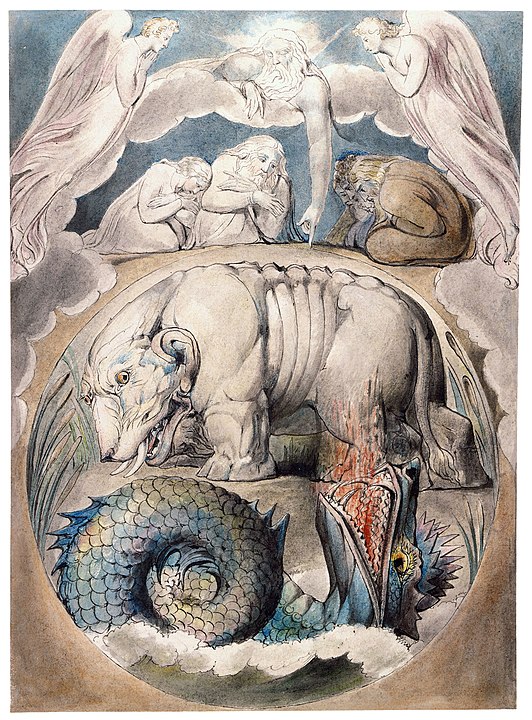
God asserts the role of Creator of both Job and Behemoth. Behemoth is said to graze like an ox, and that his strength is in his loins, with his power in the muscles of his belly. His tail is said to move like a cedar, and the sinews of his thighs are knit together. God likens Behemoth’s bones to tubes of bronze, and his limbs like bars of iron. Accordingly, Behemoth is chief in the ways of God, and man is unable to capture or tame it. Behemoth is described as lying under the swamp plants, with the mountains yielding him food.
Leviathan, Job 41:1-34

Leviathan is described as a monster of the sea, leaving behind a shiny wake and making the deep churn like a pot of ointment. According to the description given, ferocious teeth line Leviathan’s jaws and tough scales armor its skin, impenetrable to the weapons of the time. Perhaps most unusual about Leviathan was its described ability to breath out fire and smoke from its mouth and nostrils. Like Behemoth, Leviathan is described as a creature that could not be conquered by mankind.
Interestingly, the Book of Job is not the only place in the Bible that mentions Leviathan. But Leviathan is not always described as a harmful creature. Psalm 104 seems to deliberately describe Leviathan as a playful creature, frolicking about in the ocean. In Isaiah 27:1, it calls Leviathan a “tortuous serpent.”
Naming of the Beasts
The identity of Behemoth and Leviathan have eluded Bible scholars for literally millennia. Currently, there are two leading hypotheses. These are called the Zoological Approach and the Primordial Monster Approach.
Zoological Approach
The more popular hypothesis among young-earth creationists is that these are natural creatures, part of the physical world God created. Which creature this describes varies, but young-earth creationists have typically suggested that they are dinosaurs, or at the least dinosaur-like reptiles. Behemoth in particular has been proposed to be a sauropod, the group containing all of the long-necked dinosaurs.
Primordial Monster Approach
The second hypothesis is less popular at the lay level though widely discussed in academic circles. This proposes that Behemoth and Leviathan are symbolic representations. God’s purpose for these creatures is not to describe zoological details, as He does for other animals earlier in the Book of Job. Rather, they are used to underscore God’s sovereignty.
Intriguingly, this division is not split between liberal and conservative Bible scholars. Over the millennia, there have been scholars of both positions (including those affirming young-earth creationism) holding to one hypothesis or the other. Jewish sources dating to hundreds of years before Christ, such as the Book of Enoch (60:7-9), describe Behemoth as a land monster and Leviathan as a dragon of the Deep. According to the Jewish midrash, both creatures are prophesied to be served up to the righteous during end times.1 Commenting on Psalm 104:26, St. Jerome identifies Leviathan as the dragon that tempted Eve in the Garden of Eden before being cast out.2 Moving forward to the Middle Ages, Thomas Aquinas viewed Behemoth as an elephant and Leviathan as a whale.3
Possible Candidates for Behemoth

Many creatures have been put forward as possible identities for Behemoth. The earliest recorded candidates were elephants and hippopotamus. In fact, most Bibles today still suggest this as a possibility in the footnotes in Job 40. However, even the most liberal Bible scholars do not think these are a good match for Behemoth. For one thing, it mentions none of the most stand-out features of hippos or elephants. There is no mention of the elephant’s tusks, trunk, or large ears. Likewise, mention of the hippo’s large mouth and tusks are absent. Another problem is that Behemoth is said to be impossible for humans to take down. But people have been regularly hunting and capturing both elephants and hippos for millennia.
Could Behemoth Be a Dinosaur?
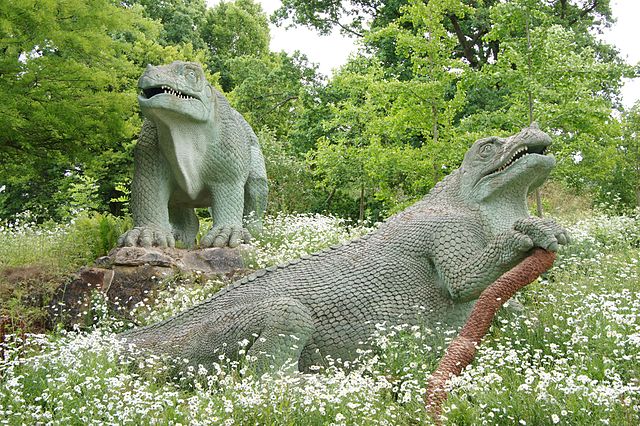
Most young-earth creationists today believe Behemoth was a dinosaur. Interestingly, this hypothesis actually predates the 1841 invention of the word “dinosaur.” In 1835, the English politician Thomas Thompson thought the then newish discovery of Iguanodon fit the description of this creature.4 This was followed by surgeon Charles Burnett in 1838 and 1841.5 Today, most young-earth creationists think Behemoth was a sauropod.
Sauropods, the so-called long-necked dinosaurs, were the largest dinosaurs that we know of. The largest of these, like Dreadnoughtus, could reach over 80 feet long and weigh upwards of 50 tons or so. Many creationists think that being “chief in the ways of God” means that Behemoth had to be one of the largest animals God created. Another reason many creationists lean toward sauropods as a possible identity for Behemoth has to do with its tail. Some translations render Job 40:17 as saying Behemoth sways his tail like a cedar tree. Unlike modern reptiles, dinosaurs held their tail aloft. The musculature of their hips caused their tails to sway back and forth with each step.
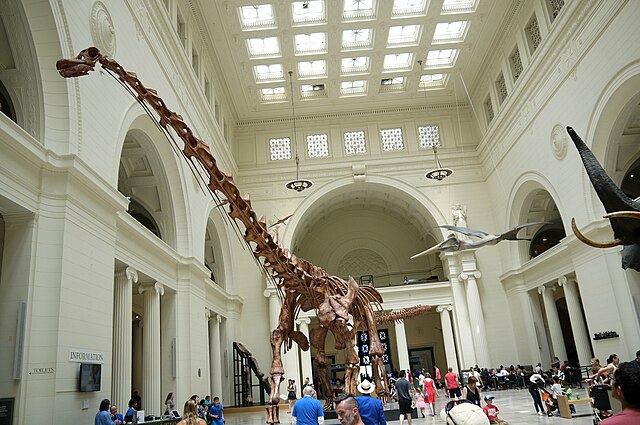
The case for Behemoth being a sauropod is not quite as clear-cut as we might like. However, given that most of its descriptions are rather generic, they can apply to a wide variety of animals. Many animals eat grass, have bones like bars of iron, and have strength in their loins. And there is nothing in the text that suggests being “chief in the ways of God” means being the largest animal God created.
However, this is similarly difficult to determine with certainty. Like the case for the hippopotamus and elephant above, few features mentioned would readily delineate Behemoth as a sauropod. It is strange that, if God were describing a sauropod, He would not mention the animal’s long neck. We do not refer to sauropods as the “long-necked dinosaurs” for no reason! This would be like describing a giraffe and failing to mention it has a long neck.
The reference to Behemoth’s tail swaying like a cedar tree is the best evidence in favor of a sauropod identification. But even then this does not clearly mean this creature was a sauropod! Many large, herbivorous dinosaurs had tails that could sway like a cedar tree. Some of the hadrosaurs or “duck-billed dinosaurs,” for example, could grow quite large. Shantungosaurus is the largest known hadrosaur, even bigger than a Tyrannosaurus rex.
Does “Tail” Really Mean Tail?
Some critics of the dinosaur interpretation of Behemoth have argued that the description of this creature’s tail is not really talking about its tail. Rather, they claim that the Hebrew word zānāv. While rendered as “tail” in English, they suggest it is a euphemism for the male reproductive organ. Additionally, they claim that the original Hebrew verb used here actually describes the “tail” “stiffening” instead of “swaying.”
However, there are even those who are against the dinosaur interpretation and still do not view this as a valid interpretation of the text.6 While the word zānāv has multiple meanings in the Bible, they all refer to a part of a larger object that resembles a handle. For a spatula or cooking pan, the zānāv would be the handle (Isaiah 7:4). For a plant, then zānāv would be the stem or tree trunk (Isaiah 19:15). In animals, the zānāv is its tail (Exodus 4:4; Judges 15:4). Nowhere in Scripture or elsewhere in Ancient Hebrew literature is it used as a euphemism for a particular part of male anatomy.
This non-tail understanding has likely influenced some modern scholars in the translation of the word “stiffens” as well. The verb most Bibles translate into English as “sways” in Job 40:17 is ḥāphēts. This word is usually translated elsewhere in these same Bibles as “to delight in/cherish.” There is no known use of the verb in ancient Hebrew that suggests this word can also mean “to move” or “to stiffen.” If this translation of Job 40:17 is correct, the text is really saying that Behemoth cherishes his tail in the same way that a cedar tree cherishes its trunk. It could be argued that this phrasing plays off of the euphemistic interpretation of zānāv, suggesting that Behemoth “delighting” in his tail is a reference to sexual pride or enjoyment. But again, this relies on a euphemism for which there is no clear precedent in ancient Hebrew literature.
As we can see in this very brief summary, there are a wide variety of competing views regarding Behemoth’s identity. This has remained a hotly contested part of church history, even before Christ stepped foot on earth.
Possible Candidates for Leviathan

As was the case for Behemoth, the footnotes of Job 41 in many modern Bible translations will attempt to identify Leviathan as some modern animal. The most common attempted identification is the crocodile, with some type of whale being the next most common suggestion. Whales do not have scaly hides like Leviathan does, nor can they leave marks in the mire like broken potsherds because they cannot come to land at all. Also, it describes Leviathan as a creature that only God can take down. Crocodiles have been commonly hunted throughout recorded history.
Could Leviathan be an Extinct Reptile?
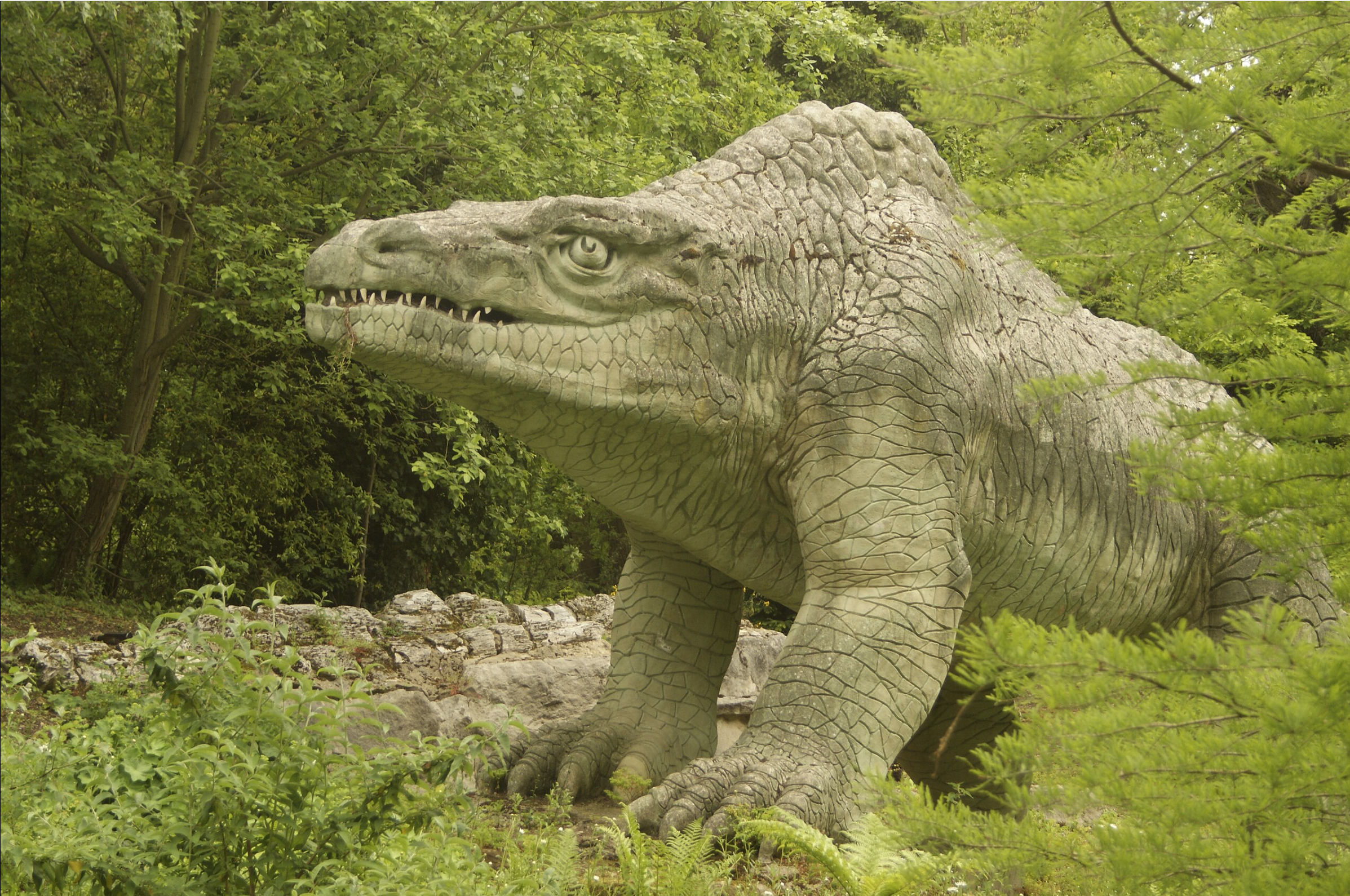
Just like Behemoth, Thompson and Burnett similarly thought that Leviathan was a creature that, today, is only known from the fossil record.7,8 They assigned this creature to Megalosaurus, the first dinosaur to ever be described. While we might puzzle as to why they thought Megalosaurus fit the description of Leviathan, we must remember that no complete dinosaur skeletons were known at this time in history. As such, Megalosaurus was originally constructed as a four-legged, crocodile-like animal. (This is how you’ll see it depicted at London’s Crystal Palace Garden.) Today, we know Megalosaurus was bipedal, moving about quickly on two legs.
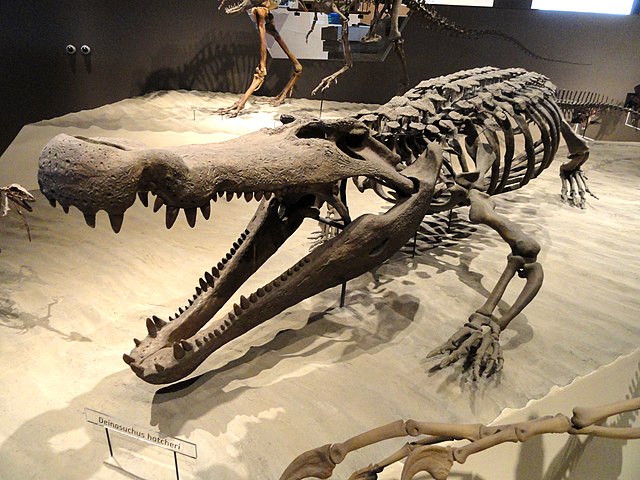
Among contemporary young-Earth creationists, the most commonly cited candidates are extinct water-dwelling predators. Maybe a marine reptile like Kronosaurus or a mosasaur, an amphibious dinosaur like Spinosaurus, or perhaps one of the ancient crocodylians Sarcosuchus or Deinosuchus. Some bizarre candidates have been suggested as well, such as a theropod like Tyrannosaurus or even a hadrosaur like Parasaurolophus. These last two suggestions are land-dwelling animals, and hadrosaur mouths were not lined with ferocious teeth, so we will not entertain these possibilities.
The problem with any identification of Leviathan is that, as was the case for Behemoth, we are not given much to go off of in Job 41. We can rule out wholly marine creatures like Kronosaurus and mosasaurs because they could not clamber onto dry land as Leviathan is described to have done. And while the anatomy of creatures like Spinosaurus suggests they spent a great deal of time in the water, it is doubtful that this was their natural element. While debate infamously rages on, recent studies suggest that Spinosaurus would have had great difficulty keeping itself afloat in deep water.9
We could assign virtually all of the physical descriptions provided to a list of water-dwelling reptiles. This makes the identity of Leviathan that much harder to pin down.
Leviathan: Breather of Fire?

Perhaps the most unique attribute of Leviathan’s description is of this creature casting out fire and smoke from its mouth and nostrils. Scholars have used this as evidence that some types of dinosaurs and other extinct reptiles may have breathed fire. At present, there is no evidence that any vertebrate animal living or extinct had this ability.
However, an important thing to remember is that the Book of Job is largely written in poetic form. This contrasts from other books of the Bible, like Genesis, which are primarily written in the form of historical narrative. This means that, while we can largely understand Genesis in a straightforward fashion, poetic books prove much trickier because they often employ symbols or figures that we are not meant to take literally. For a comparison, consider the psalmist David’s description of God in Psalm 18:7-15:
“Smoke went up from His nostrils, and devouring fire from His mouth; glowing coals flamed forth from Him.”
Psalm 18:8, ESV
Everyone agrees that the Psalms use a lot of poetic, figurative language. In this case, such language is used to convey God’s power and majesty. This contrasts with other parts of the Bible, like the Book of Genesis, chiefly written as a historical narrative.10 Job 41 seems more similar to Psalms. For example, Job 41:24 describes Levithan’s heart as “hard as stone, hard as the lower millstone.” The heart is a muscle that needs to pump in order to circulate blood around the body. If Leviathan’s heart was really as hard as stone, it would not have been able to do this. This is clearly a figure of speech used in poetic form. While God uses poetic descriptions when He is talking about the created world and its creatures throughout Job 39 and 40, the hyperbole is ramped up in not only His discussion of Leviathan, but Behemoth as well.
With this in mind, we ought to consider whether Leviathan’s fire-breathing capabilities, like God’s in Ps. 18:8, are in fact a figure of speech and not meant to state that the creature was literally breathing fire and smoke.
Are Behemoth & Leviathan Flesh & Blood Creatures At All?
Most young-earth creationists believe Behemoth and Leviathan were physical, flesh and blood creatures that roamed the earth in Job’s time. However, there are some who disagree. Paleontologist Raul Esperante, after stating most scholars disagree with the dinosaur interpretation of Job 40-41, says that the text “does not provide sufficient evidence to say that dinosaurs are mentioned in the Bible.”11 Another paleontologist, Dr. Marcus Ross, used to support the idea that Behemoth and Leviathan were dinosaurs or some similar extinct reptile. However, he has recently suggested that these creatures are symbolic, standing in to represent something else God was trying to communicate. He cites Dr. Duane Garret as a major influence in shifting his views.12
Leviathan in Extra-Biblical Literature

Extra-biblical sources should never take precedence over what Scripture clearly states. However, such resources can be helpful in shedding some light on what Leviathan really was, given that we apparently cannot do so from the Bible alone. How might people of the Ancient Near East, including Job himself, have thought of Leviathan?
There is general agreement amongst Bible scholars that the Hebrew word “Leviathan” (lvtn) is the Hebrew equivalent of an ancient Ugaritic name, Lotan (ltn), the crooked serpent.13 Zoomorphized as a writhing serpent, Lotan personified the raw power and untameable chaos of the ocean and its inhabitants. In a way, we can liken him to the role Poseidon played in ancient Greek mythology. The author of Job was not arguing for the validity of the ancient myths, but using them to demonstrate God’s power over His creation. This is similar to the hypothesis that the plagues on Egypt served as attacks on the Egyptian gods. Again, the Bible is not arguing that the Egyptian gods were real, but rather marking the God that Moses served as the one true God.
If Lotan is Leviathan, then Job 41 may similarly be describing how God’s power is greater than the chaos that was in the sea. This is a very common message throughout the Bible, from God bringing order to the formless void of the early earth (Genesis 1:1-10) and God calming the storm in the days of Jonah (1:4-15), to Jesus’ calming of the storm (twice!) and walking on the sea (Matthew 8:23-27, John 6:16-21).
Leviathan as a Symbol for Satan
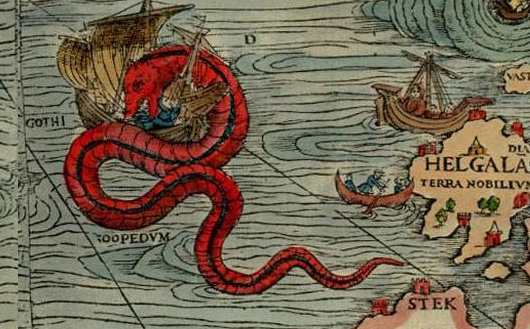
Dr. Duane Garret, Old Testament professor at the Southern Baptist Theological Seminary, discusses his understanding of both Behemoth and Leviathan in his recent commentary on the Book of Job.14,15 Garret sees Behemoth not as a literal animal, but rather as a symbolic representation of human powers and unjust civilizations. He sees Leviathan as representing Satan himself. Job had personal connections to both of these evils, as an evil society was responsible for wiping out many of his family members, and Satan was the ultimate reason for Job’s trial. God’s speech to Job is all about God’s power over the seen and unseen. It is split into God’s dominion over the physical universe (Job 38:1-38), His dominion over the animal kingdom (Job 38:39-39:30), and finally His dominion over chaos and evil (Job 40:6-41:34). Each portion of God’s speech underscores His unmatched power, helping Job learn to trust His overarching plan and finding peace in the assurance that nothing is beyond God’s control.
Attributing the final part of God’s speech to evil powers rounds out the rest of His argument. We already know from the first and second part of His speech that God is in control of the physical universe and animal kingdom. If, after this, God merely went on to talk about two more animals, God’s dominion over other people and Satan would remain unaddressed. This is particularly stark given that Satan remains prevalent through the first half of the Book of Job, and simply disappears for the second half. Unless, perhaps, Leviathan symbolizes Satan.
What Does This Mean for Young-Earth Creationism?
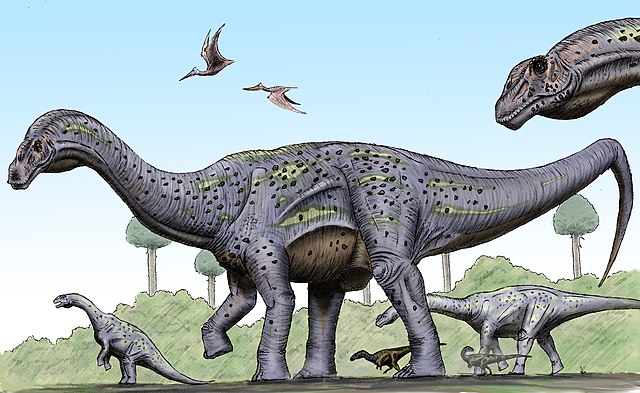
When looking at a young-earth creationist understanding of earth history, it is easy to see why a dinosaur or dinosaur-like reptile interpretation of Behemoth and Leviathan has been so prevalent. Young-earth creationists hold that humans and dinosaurs lived at the same time in the pre-Flood world. Since Noah likely brought dinosaurs onto the Ark, they would have survived the worldwide Flood alongside humans for at least some time after the Flood. Many conservative scholars consider the events recorded in the Book of Job to have occurred around the time of Abraham. If we assume a tight chronology from the Bible’s Masoretic Text, this places Abraham at less than 400 years after the Flood. Therefore, it is possible that dinosaurs survived well into the time of Job. However, as we have seen, the identity of Behemoth and Leviathan as dinosaurs (or anything else) is by no means straightforward. Several different interpretations exist, even within young-earth creationism.
A Symbolic Understanding of Behemoth & Leviathan
Even if Behemoth and Leviathan are symbolic creatures rather than ones made of flesh and blood, this does nothing to the overall young-earth creation model. From Scripture, we know that, since God created all animals according to their kinds, mankind walked the earth at the same time as these creatures. We also know that since human and animal death cannot have preceded the Fall of man, dinosaur fossils cannot predate the origin of man. We further know that since God brought at least two of every kind of air-breathing land animal to Noah to put aboard the Ark, that this would have included dinosaurs since they themselves are air-breathing land animals.
However, there is no biblical requirement for dinosaurs to have survived long past the Flood. We know they are extinct today. And we have yet to find any of their fossils in post-Flood geologic or archaeological contexts. This, then, would suggest that dinosaurs indeed became extinct shortly after the Flood. After all, many animals have become extinct since the Flood. The Flood was not responsible for the extinction phenomenon: the Curse was. As such, it is only in the natural order of things that some animals would have survived into the present day.
So the identity of Behemoth and Leviathan is not a crucial young-earth creationist argument. We as young-earth creationists are free to investigate Job 40 and 41 and determine whether or not these are dinosaur-like creatures, or even flesh and blood creatures at all.
Conclusion: Beholding Behemoth, Drawing Up Leviathan
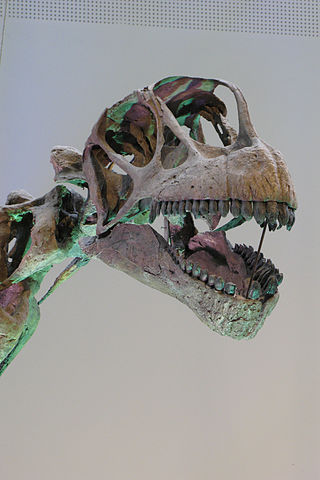
The identity of Behemoth and Leviathan continue to elude us, just as they have for millennia before. As it currently stands, there are good reasons to hold to the understanding that these were literal creatures and simply a part of God’s creation. We can also be quite sure that neither represents any animal alive today, as the descriptions do not match.
However, we must also recognize the suggestion that these are symbolic creatures is quite old in church history as well. Given this, and the overall themes and poetic nature of Job 40 & 41, we may also suggest that some of the descriptions are not literal attributes of a flesh and blood creature. In any case, we should be cautious of any identification for Behemoth and Leviathan.
Regardless of the identity of Behemoth and Leviathan, a few things remain true. This mystery deserves much further attention from Bible scholars. And no matter what trials we encounter in life, we can take a lesson from Job that God is in control. This is true no matter whether Behemoth and Leviathan were dinosaurs or not!
Footnotes
- Jewish Encyclopedia. (n.d.). Leviathan and Behemoth. Retrieved January 23, 2025. ↩︎
- Jerome, S. (2010). The homilies 1–59 on the Psalms (M. Laird, Trans.). The Catholic University of America Press, pg 228. ↩︎
- Gordis, Robert (1978), The Book of Job (New York: Jewish Theological Seminary of America). ↩︎
- Thompson, T. “An Attempt to Ascertain the Animals Designated in the Scriptures by the Names Leviathan and Behemoth,” Magazine of Natural History (1835) 8, 193–197, 307–321. ↩︎
- Burnett, C.M. The Power, Wisdom, and Goodness of God, as Displayed in the Animal Creation, London: James Burns (1838), pp. 67–70; Burnett, C.M. ‘On Some Circumstances in Zoology, and the Natural History of Man, Mentioned in Revelation. No. IV’, Church of England Magazine (1841) 10, 260–262. ↩︎
- Senter, P. J. (2024). Zoology and Job 40: Review and critique of the arguments for Behemoth as a dinosaur. Science & Christian Belief, 36(1). ↩︎
- Thompson, 1835 (footnote 4). ↩︎
- Burnett, 1838 (footnote 5). ↩︎
- Sereno, P.C., Myhrvold, N., Henderson, D.M., Fish, F.E., Vidal, D., Baumgart, S.L., Keillor, T.M., Formoso, K.K. and Conroy, L.L. (2022). Spinosaurus is not an aquatic dinosaur. Elife, 11, p.e80092. ↩︎
- The following resource contains an excellent discussion on why the events of Genesis 1-11 must be understood as historical events: Madueme, H. (2024). Defending sin: A response to the challenges of evolution and the natural sciences. Baker Academic. ↩︎
- Esperante, R. (2012, December 12). Dinosaurs and the Bible. Geoscience Research Institute. ↩︎
- What Your Pastor Didn’t Tell You. (2023, January 15). Who is the REAL Behemoth? ft. Marcus Ross [Video]. YouTube. ↩︎
- Encyclopedia of the Bible. (n.d.). “Leviathan.” In Encyclopedia of the Bible. Bible Gateway. Retrieved January 23, 2025. ↩︎
- Garrett, D. (2024). Job: Evangelical exegetical commentary (EEC). Lexham Press. ↩︎
- Garrett, D. (n.d.). The book of Job [Video lecture series]. Biblical Training. ↩︎

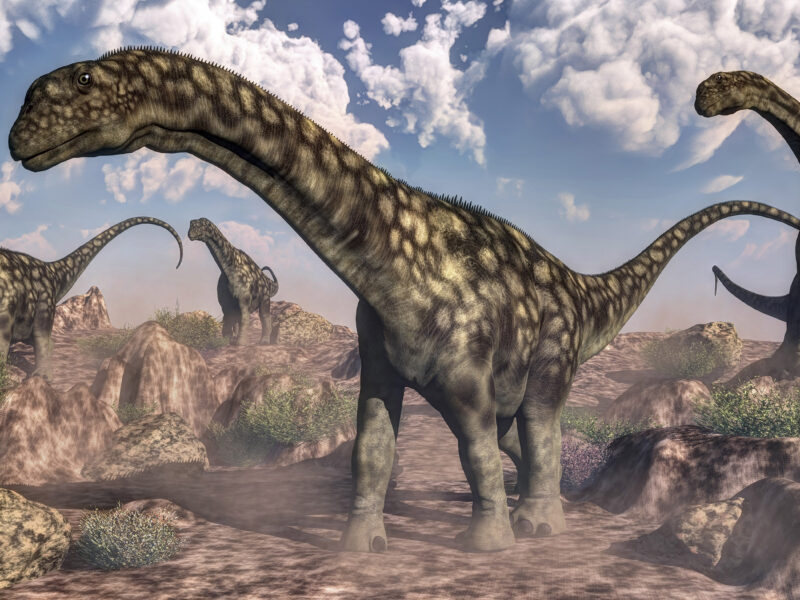










Hello Christian,
Thanks for a thought provoking article.
I would however suggest that just as you are well balanced in the discussion of the identity of the creatures in Job, you could also have qualified the following statement:
“And we have yet to find any of their fossils in post-Flood geologic [..] contexts”
The jury is still out on which rocks are post-flood. Some creationary scientists would say that we have found dino fossils in post flood rocks, because Cretaceous rocks are post flood.
Regards,
Marc
Hello Marc,
It is great to hear from you again! You make a fair point, as there is indeed ongoing discussion among young-earth scientists about which rock layers are post-Flood. I can certainly reword the sentence you quoted from to account for that in the article.
Thank you for your thoughtful feedback!
Many blessings,
Christian
Well done summery of the issue. NO. Its not a dinosaur, I say, because there were no dinosaurs. they are liosidentified creatures from raw data/fossils that we live with today. the theropod dinos being the clue as they surely are just flightless ground birds. Even taking the creatures mentioned in Job at face value they could be other creatures in the fossil record. Eygpt has fossils of creatures called mammals but hugh and extinct. the behemoth could be what is called a sauropod but its really likely horses are in this kind too. Or others. novody saw the creatures before the flood. only raw fossils. Creationists must change thier classification ideas.